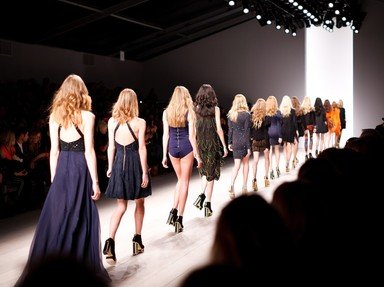Quiz Answer Key and Fun Facts
1. Marcus Antonius, as portrayed by Richard Burton, was a main star in an award-winning movie of the 1960s, which was also a good example of the kind of clothing worn by people during the days of the Roman Empire. What movie was this?
2. We are fortunate to have a biography written about the great ruler Charlemagne (743-814) by his constant companion. The work is titled "Vita Karoli Magni". In it the author details the common clothing worn by the populace at the time, clothing Charlemagne himself always wore, and which was worn by people all over the western world at that time. Who was this author?
3. By the time King John of England came along, clothing for women was portrayed reasonably accurately in which long running television series which was built around the character Robin Hood?
4. And so we roll on to the 1500s. Lucky are we indeed to have an illuminated manuscript ("Tres Riches Heures du Duc de Berry") from this era which clearly shows the fashions of the time. Is it true that it took almost a century to produce this work?
5. By the 16th century, tensions between England and France began to escalate, and with this came a distinct differences in the fashions of the two countries. Other countries began to develop their own distinct style of clothing as well. One underwear "fashion" for women however crossed all borders. Obviously women couldn't be painted in this state at that time in history, but later magazines, paintings and photographs displayed it perfectly. It was uncomfortable, tight, constricting, and did up with laces. It features in a piratical 2003 movie starring Keira Knightly, Johnny Depp and Geoffrey Rush. What is the name of this movie?
6. The 17th century saw clothing become very elaborate, ornamented, accompanied by wigs, with huge hooped skirts for women and elegantly curled long hair for both sexes. These fashions are epitomized, perhaps more than anywhere else, in a 1974 movie starring Michael York, about a small group of swordsmen fighting for truth, honour and their king. Based on a novel by Alexandre Dumas, what is the name of this movie?
7. The eighteenth century saw men and women, particularly women, wearing the most impossible fashions under the sun. Skirts were so wide they had to go through doorways sidewards, and wigs so high that women had to bend their knees so as not to have them set on fire by overhead candles. Fortunately at the close of this period, the fashions of the everyday had become dainty, feminine and much more suitable for doorways! Summed up magnificently in the beautiful television miniseries featuring the heroine Elizabeth Bennett, what series was this?
8. In the first half of the 19th century the young princess, Victoria, took the throne of the British Empire. The fashions changed accordingly during her reign. Skirts became fuller, but most day dresses as a rule were somewhat plain and even rather severe. Balls however were a different matter. Women then wore beautiful and colorful gowns and danced to the music of the man known as the "Waltz King". Who was the fine composer known by this title?
9. And then the twentieth century danced its way in. Fashions went from the sedate Victorian styles, to the lovely Edwardian fashions, to the flapper gowns of the roaring twenties, the elegant thirties, the economical forties, the innocence of the fifties, the extremely colourful and peculiar sixties, seventies and beyond. On the dance floor at the beginning of this century, one woman would start a revolution in hair styles for women forever when she cut her hair short and incorporated many new and "daring" dances into her routines. What was her name?
10. So onto the 21st century where fashions could be anything, either retro, futuristic in style, plain old jeans and a t-shirt, or outfits that look like something the cat dragged in. Who knows what lies ahead? Science fiction shows attempt to convince their viewers of the possibility of various fashions for the future by dressing their stars in sometimes disastrous outfits. When she was dressed in a very short mini-skirt and boots for her part in a very famous space travel series, one of its stars, Marina Sirtis, was criticised by the press for looking "like a galactic cheer leader". Which show was this?
Source: Author
Creedy
This quiz was reviewed by FunTrivia editor
kyleisalive before going online.
Any errors found in FunTrivia content are routinely corrected through our feedback system.

